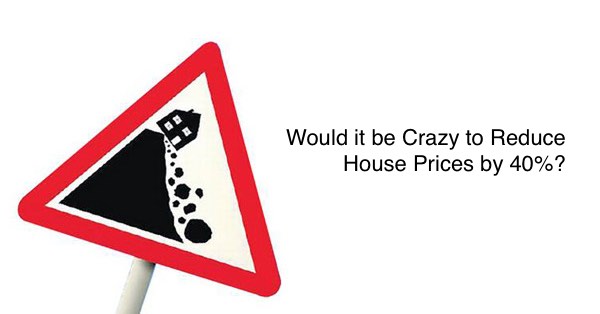Economist Arthur Grimes yesterday suggested building 150,000 new homes to reduce Auckland house prices by 40%. This idea was described as ‘just crazy’ by the Prime Minister. Is it?
Affordability
We know that in Auckland the median house price is more than 9 times the median household income. The standard international definition of ‘affordable’ is 3 times, so it is pretty safe to say that Auckland’s house prices are a long way from being affordable.
The maths of restoring affordability are fairly simple; we need to reduce house prices relative to incomes. To achieve that we either need to reduce house prices, increase incomes, or both; slow the growth in house prices so that it is less than the growth in incomes.
In contrast, the Government’s target is to return house price growth to ‘single digits’. That is no guarantee of house prices becoming more affordable. Instead, if the Government achieves their target it could just as likely mean that already unaffordable housing gets slowly more unaffordable. As an aside, returning house price growth to single digits seems inevitable – the current rate of growth cannot be sustained indefinitely – at some price level people would stop buying.
From an affordability perspective Grimes’ plan seems comparatively sane.
Financial Risk
The concern the Prime Minister raised was that people would lose their equity and banks would be put in trouble.
As Grimes pointed out, housing is an investment like any other so why can’t prices come down? Most investments are by their nature a risky business. Values may rise or fall; just ask any Kiwi who piled into the sharemarket back in 1987. The law of investments is the more return you get, the greater the risk is that you could lose it all. Why shouldn’t that apply to housing? Indeed, we have seen price falls in some parts of the country in recent years.
As for the risk to banks, in Grimes’ view (and he is a former Reserve Bank chair) our banks could handle that kind of shock; in fact they could handle up to a 55% drop in Auckland house prices.
The Prime Minister shouldn’t fret about this one, it is the job of the Reserve Bank to ensure that banks are prepared to deal with a fall in house prices. The Morgan Foundation has for many years pointed out that the lending rules around mortgages have helped fuel the speculation in the housing market. The Reserve Bank has argued that housing is a lower area of investment, which justifies higher leverage without increased risk to the economy. However this has become a self fulfilling prophecy – allowing for higher leverage simply means that investors pile in until housing does eventually become a risk. The Reserve Bank seems to be realising this increased risk, they have already implemented loan to value ratios (which look set to be tightened further) and perhaps the use of debt to income ratios in the future. So the risk to banks is low and assuming the Reserve Bank continues to act, looks set to remain that way.
Developers
Finally the Prime Minister argued that developers could be hit by any drop in house prices, which would work against Grimes’ plan for 150,000 new homes.
However, Grimes’ suggestion wasn’t for business as usual. His was a bold plan to build up and out. Allowing increased density in the inner suburbs would provide a strong incentive to stop land banking and start building, otherwise developers could see their land values start to fall. Similarly on the fringes Grimes was suggesting using the Public Works Act to acquire land, and using the profits from that to fund the development of infrastructure.
While a fall in house prices could hurt certain developers who own a lot of land and were slow off the mark to develop it, it is hard to see how it would hurt development.
Are there enough builders to build the houses in Grimes’ plan? We found the builders to build in Christchurch – we got them in from overseas where necessary. The Christchurch rebuild will be winding down soon, so there will be plenty of spare capacity if the jobs are there.
Radical?
Is Grimes’ plan really that radical? The most extreme part of his proposal is compulsory land acquisition; effectively forcing owners to sell their land. However, the Government is already looking at this idea as a way to reduce land banking, so it is hardly radical. As we have pointed out, closing the loopholes around the taxation of assets would be a far less invasive incentive against land banking.
The only really radical part of the plan is the sheer scale, particularly for intensive development in the city. This is the part of the plan that scares politicians because it means standing up to residents that oppose development in their back yard. The problem is that these NIMBYs vote, and have a much louder voice than the future tenants of those inner city apartments.
However, intensification is essential for restoring affordability. As we have discussed previously, sprawl may deliver cheaper housing, but once the private and public costs of transport are taken into account it often ends up more expensive overall. Intensification is the thorn that must be grasped for sake of the future of Auckland.

